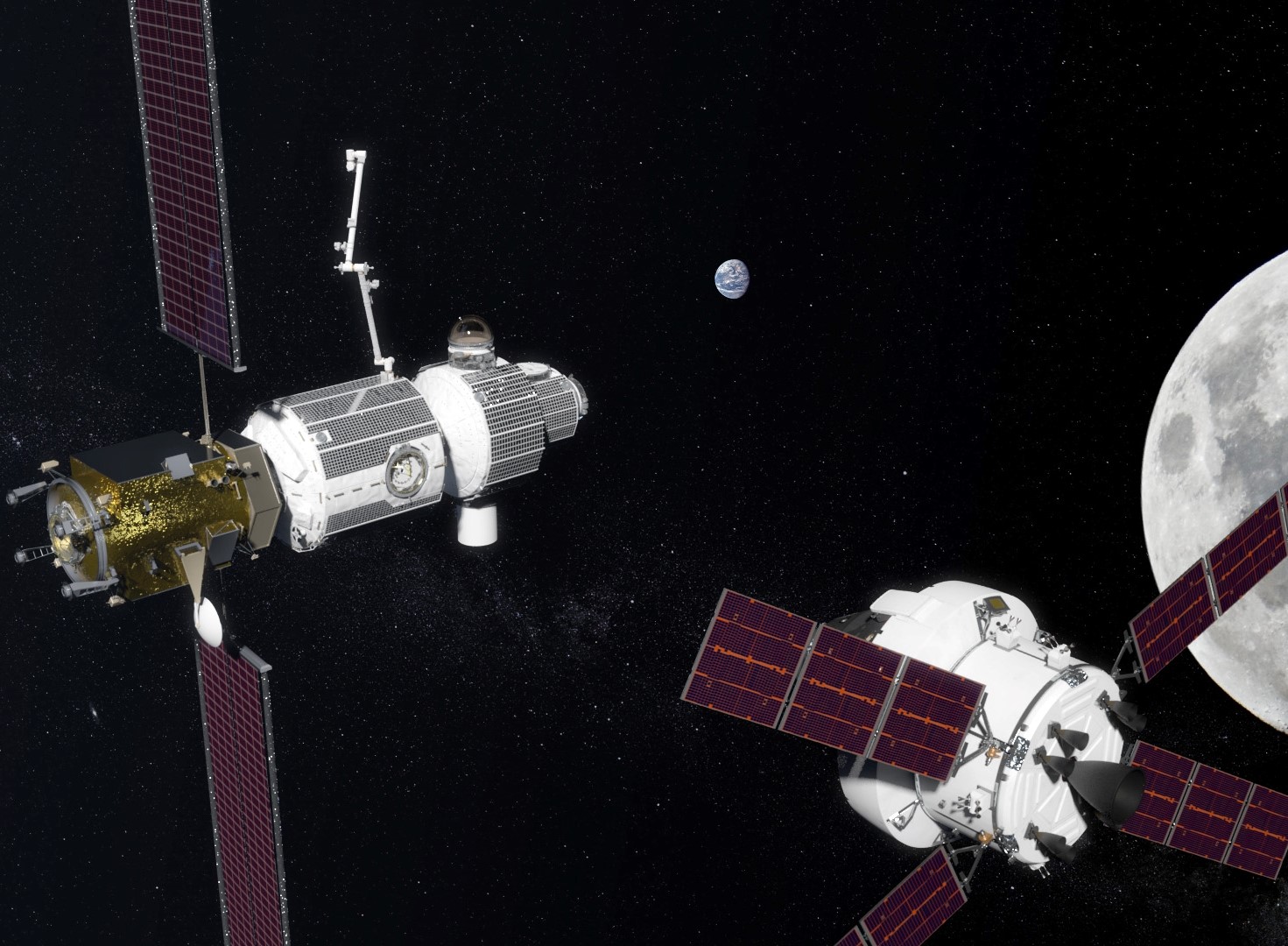Moon Station Could Use Tech from Scrapped Asteroid Mission, NASA Says

NASA is salvaging technology developed under a canceled asteroid rendezvous and relocation mission for a new initiative to build a lunar orbiting base. The base would eventually serve as a hangar for assembling spacecraft heading to Mars.
The lunar-orbiting outpost, called the Deep Space Gateway, has replaced the Obama administration's Asteroid Redirect Mission (ARM) as an interim step in NASAs long-term goal to send astronauts to Mars. ARM would have sent a robotic spacecraft to an asteroid to grab a large boulder and relocate it into a high lunar orbit for eventual visits by U.S. astronauts.
The controversial ARM program officially died with President Donald Trump's proposed budget request for the fiscal year beginning Oct. 1. But NASA is salvaging ARM's key technologies, including high-powered solar-electric propulsion, to use for the gateway and other projects, agency officials and other experts said at a hearing for the House Committee on Science, Space and Technology yesterday (June 29). [NASA's Mars Plan May Include Yearlong Mission to the Moon]
"Electric propulsion can offer the ability to move large masses through space with minimum fuel usage," said Bill Gerstenmaier, NASA's associate administrator for human exploration and operations. "It has significant advantages over other forms of propulsion, most notably efficiency."
In addition, fuel used in an electric power system is storable, doesn't boil away and can be easily resupplied, Gerstenmaier said.
Dozens of commercial and military satellites, as well as NASA's Dawn science probe to the asteroid belt, use electric propulsion today, but the power generated for their maneuvering thrusters is low, according to the panel of experts who spoke at the hearing. The majority of spacecraft utilize chemical propulsion systems, which add a significant amount of mass for fuel tanks. Electric propulsion systems are far lighter to launch.
NASA is aiming to develop 12.5-kilowatt electric thrusters for the multipurpose Deep Space Gateway, a combination research station, lunar operations base and assembly outpost for Mars-bound spacecraft. That's about 40 percent more powerful that currently available systems, Gerstenmaier said.
Get the Space.com Newsletter
Breaking space news, the latest updates on rocket launches, skywatching events and more!
"With advanced electric propulsion, we will have the ability to move habitat systems to various orbits around the moon," he said. "We can support crewed science operations from the module in various lunar orbits. … The module is not stuck in one place."
Electric propulsion systems in the 50- to 100-kilowatt level may be needed to get crews to Mars faster than is possible with conventional chemical propulsion. This would shorten the amount of time astronauts are exposed to dangerous radiation and the amount of food and other supplies they would need for the trip, according to the panel members.
Electric propulsion has already proven its worth on commercial satellites, culminating in the 2015 launch of the world's first all-electric spacecraft, said Mitchell Walker, chairman of the American Institute of Aeronautics and Astronautics' Electric Propulsion Technical Committee, who also presented testimony during the hearing.
"The enormous propellant-mass savings achieved with electric propulsion allows two all-electric satellites to launch on one smaller, less expensive launch vehicle," Walker said.
This year, India and China launched their first electrically propelled satellites, and Japan is scheduled to fly its first all-electric spacecraft in 2021, Walker said, adding that Europe and Russia are investing in the technology as well.
Industry projects show 50 to 75 percent of all future geostationary spacecraft are expected to use electric propulsion, he said.
Irene Klotz can be reached on Twitter at @free_space. Follow us @Spacedotcom, Facebook and Google+. Original article on Space.com.
Join our Space Forums to keep talking space on the latest missions, night sky and more! And if you have a news tip, correction or comment, let us know at: community@space.com.

Irene Klotz is a founding member and long-time contributor to Space.com. She concurrently spent 25 years as a wire service reporter and freelance writer, specializing in space exploration, planetary science, astronomy and the search for life beyond Earth. A graduate of Northwestern University, Irene currently serves as Space Editor for Aviation Week & Space Technology.









